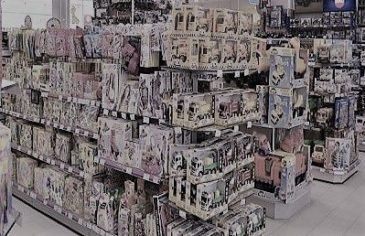
Toys Wholesaler’s/supplier’s challenges and opportunities
So, Which Entity Plays a Vital Role—Retail or Wholesale?
Let’s first understand where wholesalers fit into the product supply chain. Wholesalers purchase products directly from manufacturers or producers and sell them to retailers—typically physical stores or, more recently, online sellers. Wholesalers are crucial in distributing products to businesses and ensuring that goods reach consumers through retailers.
Why Not Wholesale?
Before deciding, it’s essential to revisit the roles of each model. Retail involves selling products directly to the end user, whereas wholesale (or agency sale) means selling products in bulk to another business entity and then selling them in smaller units to consumers.
Wholesale can feel monotonous if you’re not passionate about a specific product. Much of your time will be spent on supply chain management, which involves getting products to the right locations, maintaining inventory, and coordinating logistics and shipping.
You’ll also need to vet potential buyers thoroughly, as you’re dealing with businesses, not consumers. Failing to do so can result in financial losses or inventory issues.
Speaking of inventory, you’ll often purchase large quantities from manufacturers. If your products sell quickly and reach retailers efficiently, that’s ideal. But if sales lag, unsold stock can drain your capital.
In essence, wholesale works best for those who can efficiently manage inventory and logistics and prefer dealing with businesses over consumers. Wholesale may be your ideal business model if you can handle these operational challenges.
Day-to-Day Challenges Faced by Wholesale Distributors
According to recent studies, the wholesale distribution industry in the U.S. alone consists of approximately 330,000 companies with annual sales of around $7 trillion. Wholesalers have long been vital to the supply chain, but they now face significant and evolving challenges.
A wholesale distributor serves as a bridge between the manufacturer and the retailer, facilitating product flow. However, because they sit in the middle of the supply chain and don’t sell directly to consumers, wholesalers must profit by marking up products while competing with manufacturer-direct prices.
Retailers demand high-profit margins due to rising operational costs. For example, in port cities like the UAE, high rent and storage fees increase business costs. Manufacturers now often bypass wholesalers by selling directly to large retailers or consumers, offering better prices by eliminating the wholesaler’s share.
Mega retailers such as Walmart, Amazon, and Souq buy in bulk directly from manufacturers, bypassing wholesalers entirely. These retailers maintain extensive inventories and manage logistics in-house, which has allowed them to capture nearly 60% of general merchandise sales—up from just 35% a decade ago.
To stay relevant, wholesalers must adopt strategic, agile approaches and embrace technology that streamlines operations and enhances efficiency. Running a lean operation, managing inventory wisely, and making data-driven decisions are essential for survival.
Key Operational Insights
For wholesalers, success often depends on understanding monthly retailer demand and stocking accordingly. Business intelligence tools can offer invaluable insights into order patterns, helping avoid excess inventory and dead stock.
Toy wholesalers, in particular, must be aware of hazards related to the storage and handling of delicate or seasonal products. Tight safety protocols can minimize risks and ensure operational readiness.
Supplier and Retailer Consolidation
Toy wholesalers face growing competition from national retailers and e-commerce platforms. To remain competitive, wholesalers should:
- Invest in technology to track orders, manage inventory, and optimize the supply chain.
- Leverage data to identify inefficiencies and address bottlenecks.
- Adopt warehouse and transportation management systems to reduce costs and improve delivery accuracy.
- Analyze supplier performance, defect rates, and delivery punctuality to determine the best partners.
Opportunities for Growth
Wholesalers can thrive by embracing digital solutions and strategic innovations:
- Become market leaders with digital order management and robust e-commerce platforms.
- Streamline order processing for better accuracy and faster fulfillment.
- Attract B2B buyers through a seamless omnichannel experience.
The old ways are becoming obsolete. Wholesalers who evolve with the times will emerge on top.
SWOT Analysis for Toy Wholesalers
Strengths:
- Wide Product Range: Cater to diverse age groups and trends.
- Strong Supplier Ties: Secure favorable terms and early product access.
- Efficient Distribution: Ensure timely deliveries to retailers.
- Industry Expertise: Understand market demands and release cycles.
Weaknesses:
- Price Sensitivity: High customer price awareness limits markup flexibility.
- Seasonal Demand: Peaks during holidays can strain cash flow in off-seasons.
- Trend Dependency: Keeping up with fast-changing preferences is difficult.
Opportunities:
- E-commerce Growth: Reach global customers beyond local markets.
- International Expansion: Tap into emerging economies.
- Sustainable & Educational Toys: Meet growing consumer demand.
- Customization: Offer personalized products for niche appeal.
Threats:
- Intense Competition: From other wholesalers, retailers, and online giants.
- Counterfeit Products: Risk to brand reputation and legal standing.
- Economic Volatility: Affects consumer spending.
- Regulatory Hurdles: Safety compliance is essential, especially for kids’ toys.
Strategic Recommendations
- Expand Product Offerings to reflect emerging trends and consumer feedback.
- Boost Online Presence with a well-designed e-commerce platform.
- Support Retailers through co-marketing, training, and resources.
- Prioritize Quality and Safety to build lasting customer trust.
- Stay Informed with regular market research and trend analysis.
By addressing internal weaknesses, seizing market opportunities, and minimizing external threats, toy wholesalers can position themselves for long-term growth and competitiveness.
